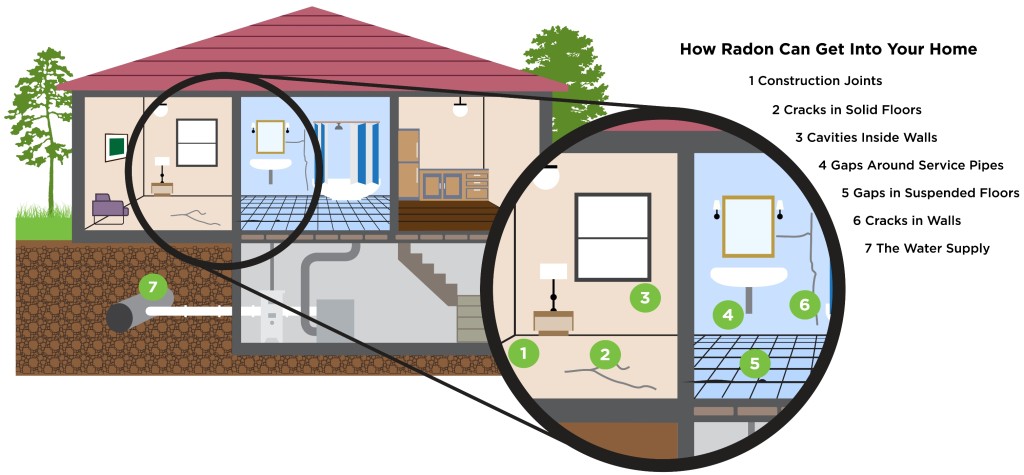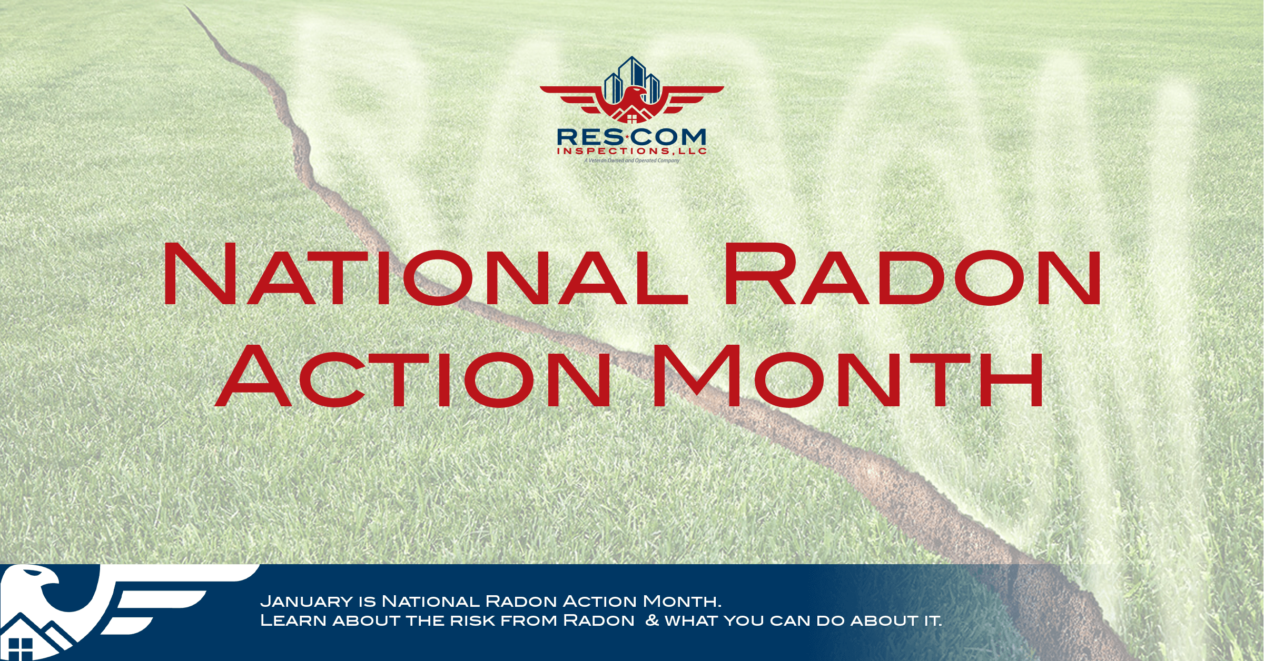Radon is a naturally occurring radioactive gas, which has always been a part of our environment. It’s a natural decay product of uranium and is found in soil everywhere in varying concentrations. The New Jersey Department of Environmental Protection (DEP) and the United States Environmental Protection Agency (EPA) has found that radon can also be an unwelcome part of our home environment.
ResCom Inspections, LLC is able to perform 2 different types of radon tests for our clients in NJ.
- Charcoal canister test – his test is the most popular radon test performed in New Jersey because of its ease of use and affordability.
- Continuous Radon Monitor test – we also have long term Alpha track radon gas test devices available to perform long term radon testing in NJ. These devices records radon levels over a 3 month to 1 year range to get a precise radon reading. This type of premium testing requires specialized training by our licensed measurement technicians. If you are concerned to know what your long term average radon levels are, this option may be the best choice for you.
How does Radon gas enter the house?

Slight differences between indoor and outdoor pressure can affect the rate at which radon enters the home. Reduced indoor pressure draws the gas through any cracks and openings. This lower indoor pressure may be caused by open windows on the downwind side of the house, operation of kitchen or exhaust fans, and the use of air by furnaces and other large appliances. The fact that air in a house is often warmer than the surrounding air and tends to rise can also cause reduced indoor pressure. Another means of entrance for the gas is water supplies, particularly underground wells. However, the levels in water supplies in New Jersey are usually not high enough to present a significant risk by themselves. Also, public water supplies usually undergo a great amount of agitation and aeration during treatment, which releases the radon gas before it reaches any residence.
How can I tell if there is significant Radon gas in the house?
Radon gas can accumulate in enclosed places, such as a house, but its presence, even in high concentrations, cannot be detected by human senses because the gas is invisible and has no odor. Long term or chronic exposure to radon has been linked to lung cancer. The greater the concentration and the longer a person is exposed, the greater the risk, so all people are encouraged to reduce their exposure. However, because of its physical characteristics, the only way to detect the presence of radon gas and measure the level is by a test. So people wanting to limit their exposure must first conduct a test to determine what their exposure levels are.
In New Jersey, there is a particularly uranium-rich geological formation, called the Reading Prong, which stretches from Pennsylvania through northwestern New Jersey into Southern New York State. Testing of homes built along this geologic formation has revealed high indoor levels of radon gas. Further testing in New Jersey, beyond the Reading Prong area, has shown additional areas where homes have elevated radon levels. This has led the DEP to conclude that radon is a statewide health issue. All homeowners are encouraged to test and, if levels are elevated, residents are urged to consider remediation.
Radon can move easily through soil and tiny cracks in rock. When it reaches the surface of the soil, it disperses and is diluted to very low levels in the outdoor environment. However, when the gas moves upward through soil beneath a home, it may enter through cracks or other openings in the foundation and build up to unacceptable levels.
What are the health hazards associated with Radon gas?
The higher the levels of radon gas in a home, the greater the amount inhaled. Just as radon is produced from the decay of radioactive materials, it further decays producing new radioactive materials in the form of solids. These radon decay products can attach to other particles, such as dust and cigarette smoke, which can be inhaled and become trapped in the lungs where they emit radiation. These decay products can damage lung tissue and increase the risk of developing lung cancer. The risk of lung cancer from a given exposure to radon is greater for a smoker than a non-smoker.
Lung cancer is the only known health effect linked to radon exposure at this time. The EPA estimates that between 15,000 and 22,000 of the 125,000 annual deaths from lung cancer may be attributable to radon exposure. In New Jersey, of the annual 4,700 lung cancer deaths, as many as 140-250 may be associated with radon exposure. These estimates of cancer risk from radon exposure are less than those caused by smoking, but are far greater than the number of cancers estimated to occur as a result of exposure to other environmental hazards, such as toxic chemicals in drinking water or pesticide residues on food.
Mitigating your home
The most common type of radon mitigation system is the sub-slab depressurization system. This system uses venting and sealing to lower radon levels in the home. A pipe is installed that runs from below the basement flooring to above the roof line, with a fan at the top that draws radon out from under the slab. Cracks and openings in the foundation are sealed. The radon is vented through the pipe to the outside, where it is quickly diluted.
The average price of such a system is around $1,200, although prices can range from $500 to $2,500, depending on characteristics of the home and the underlying soil. You can install the system yourself, if you are highly experienced in making home repairs, or you can hire a New Jersey certified radon mitigation company to do the work for you. New Jersey certified radon mitigation professionals meet specified education and experience standards and must take continuing education classes each year to maintain their certification. It is against the law for uncertified contractors to do mitigation work in New Jersey.
After your home has been mitigated, make sure the mitigator does a post-mitigation test to prove the system is working properly. In addition, you can contact the Radon Program to obtain a free post-mitigation test (you will have to provide a copy of your mitigation contract). Retesting your home every two years will tell you whether or not your system is still working effectively in reducing the radon level to below 4 pCi/L. If you believe that your system was not installed correctly, you can contact the Radon Program to arrange for a free inspection and test of the system.
If you would like more information on Radon visit:
USA: www.epa.gov/radon

